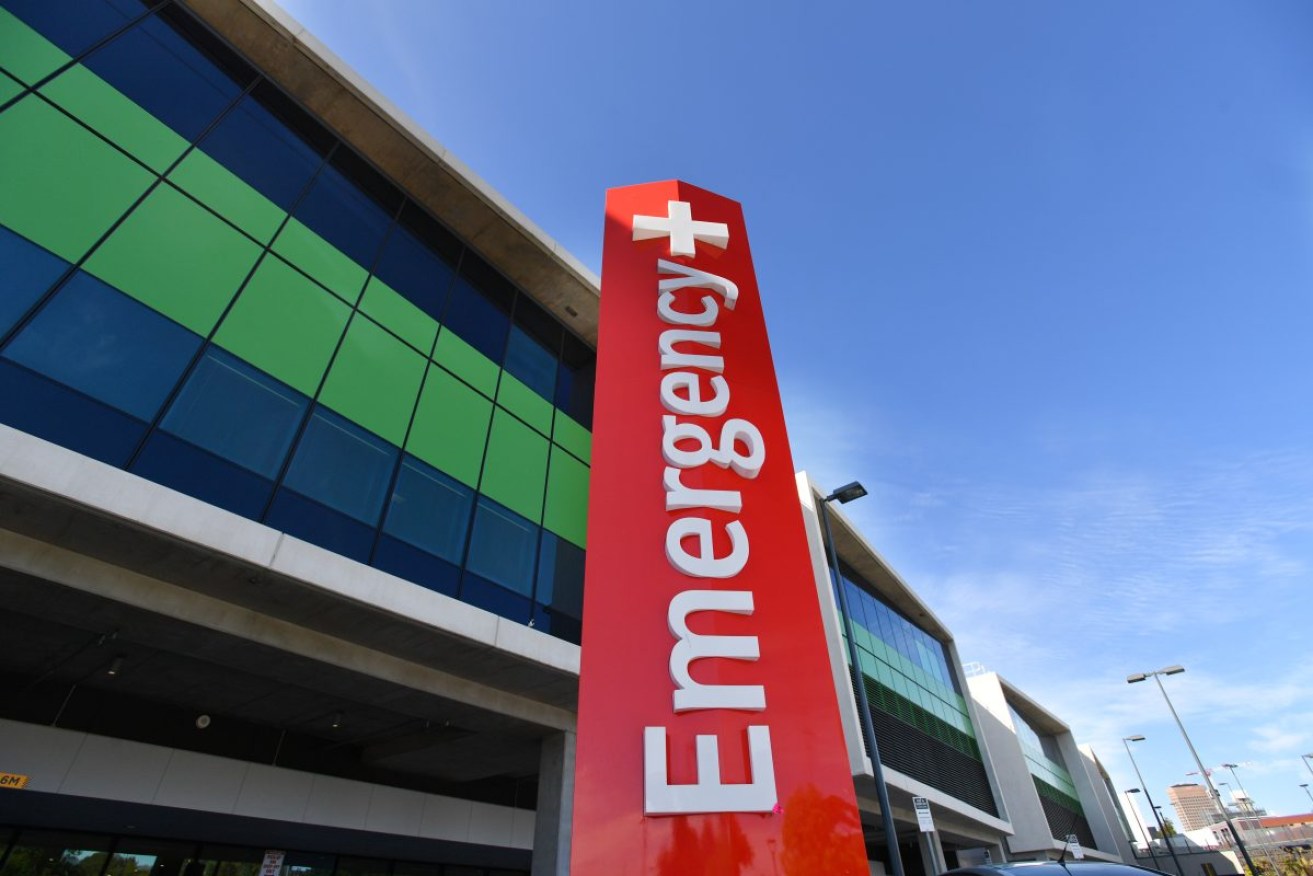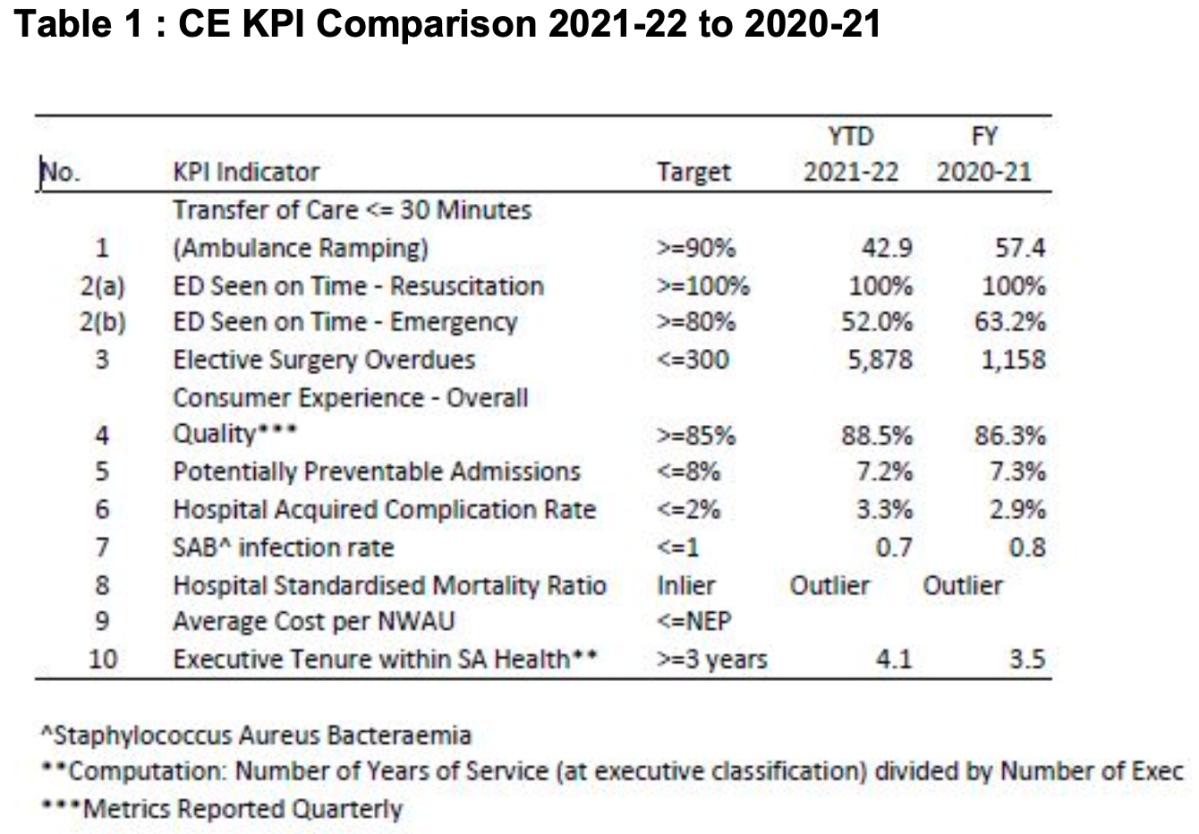‘Substantial pressure’: SA Health fails to meet key targets
UPDATED: Almost 6000 elective surgeries were cancelled last financial year, just over half of emergency department patients were seen on time and ramping increased, SA Health has reported.

Photo: David Mariuz/AAP
Data published in SA Health’s 2021-22 annual report reveals the impact of COVID-19 restrictions and surging hospital demand across the state’s health sector, with the department failing to meet several targets set by its chief executive.
The report, which was tabled in parliament yesterday, shows 5878 elective surgeries were overdue in 2021-22 – a jump from 1158 the year before.
SA Health’s chief executive had set a target for less than 300 elective surgeries to be overdue in 2021-22.
It comes after the state government postponed elective surgery procedures in July 2021, as well as in January, February, July and August this year during Omicron waves to free up resources across the health sector.
Meanwhile, SA Health’s report shows emergency department backlogs resulted in just 52 per cent of patients being “seen on time”, or within clinically-recommended triage times.
That was a decrease from 63.2 per cent the year before. SA Health’s chief executive had set a target for over 80 per cent of emergency department patients to be seen on time in 2021-22.
The report also shows an increase ambulance ramping, with just 42.9 per cent of patients being admitted to hospital in under 30 minutes in 2021-22, compared to 57.4 per cent the year before.

Table: SA Health
But Health Minister Chris Picton this morning released new ambulance ramping data for October which shows patients spent 3330 hours ramped outside hospitals in October – a decrease of 6.6 per cent from September and 13.2 per cent down from the high in June.
Picton said the October figure was the lowest since April.
He said he didn’t think it was surprising that from July last year to June this year the state’s health system was “in a very significant crisis”.
“We’re still facing the same issues, but we are now working overtime to invest, to put every possible investment in place, to hire additional staff, to put extra beds in, to make sure that we can address this situation,” he said.
“We’ve ended the war with our ambos for a start, we’re not picking fights with our ambos, we’re now listening to our ambos.
“We’re putting in resources for them, but we’re also putting in resources for our hospital system.”
In a statement to InDaily, a spokesperson from SA Health said the health system had been under “consistent pressure” with the impact of COVID, flu and normal winter demand, which had “significantly impacted” its elective surgery capacity.
The spokesperson said SA Health was taking “exceptional measures” to create elective surgery capacity to help deal with current high demand.
“This includes working with the private system and working to reduce outpatient appointments to make more staff available. Significant efforts are also underway to find appropriate places for NDIS and aged care patients ready for discharge,” they said.
“Since February, we have reduced our elective surgery overdue list by almost 23 per cent.”
The spokesperson said SA Health had also introduced virtual care services, including the SA Virtual Care Service and the Child and Adolescent Virtual Care Service, which had enabled “thousands of patients” to avoid the emergency department if they can receive their care elsewhere.
“As is always the case during busy periods, people who present to our emergency department are treated according to their clinical needs and we always treat the sickest people first,” they said.
SA Health chief executive Dr Robyn Lawrence, who started in the role after the 2021-22 reporting period, wrote that last financial year was “challenging” for SA Health as it managed the impact of the COVID-19 pandemic.
“While the system over the last 12 months has remained under substantial pressure, we have managed a significant pandemic response in both our acute hospital settings and in the community where a range of services are still being provided,” she wrote in the annual report.
“The South Australian Government’s election commitments and our focus to strengthen the positive partnerships we have forged allow us to take on some core structural challenges to how our public health system functions.”
Lawrence wrote one of SA Health’s “key priority areas” was to address ambulance ramping and manage demand across the “healthcare community” to avoid putting pressure on emergency departments.
She also wrote funding in the June state budget to expand ambulance services, upgrade hospitals and increase the number of doctors, nurses and paramedics would lead to better outcomes.
It comes after Picton this morning announced that by the end of this month, 32 new paramedics would start work at the Marion and Edwardstown stations, with those sites to also form a new 24/7 crew of 16 paramedics to work across the inner-southern suburbs.
The Edwardstown crew will be temporarily based out of Marion while a new station is built.
Picton said 12 paramedics would also start in Gawler before the end of the year.
“Our ambos report that even on days when ramping is low, there are still not enough ambulances to cope with demand and respond on time,” he said.
“These new crews will help South Australians to get help in an emergency when they need it.
“We are also taking other steps to reduce pressure on ambos, including opening up every possible hospital bed and building more beds and hiring more hospital staff.”




